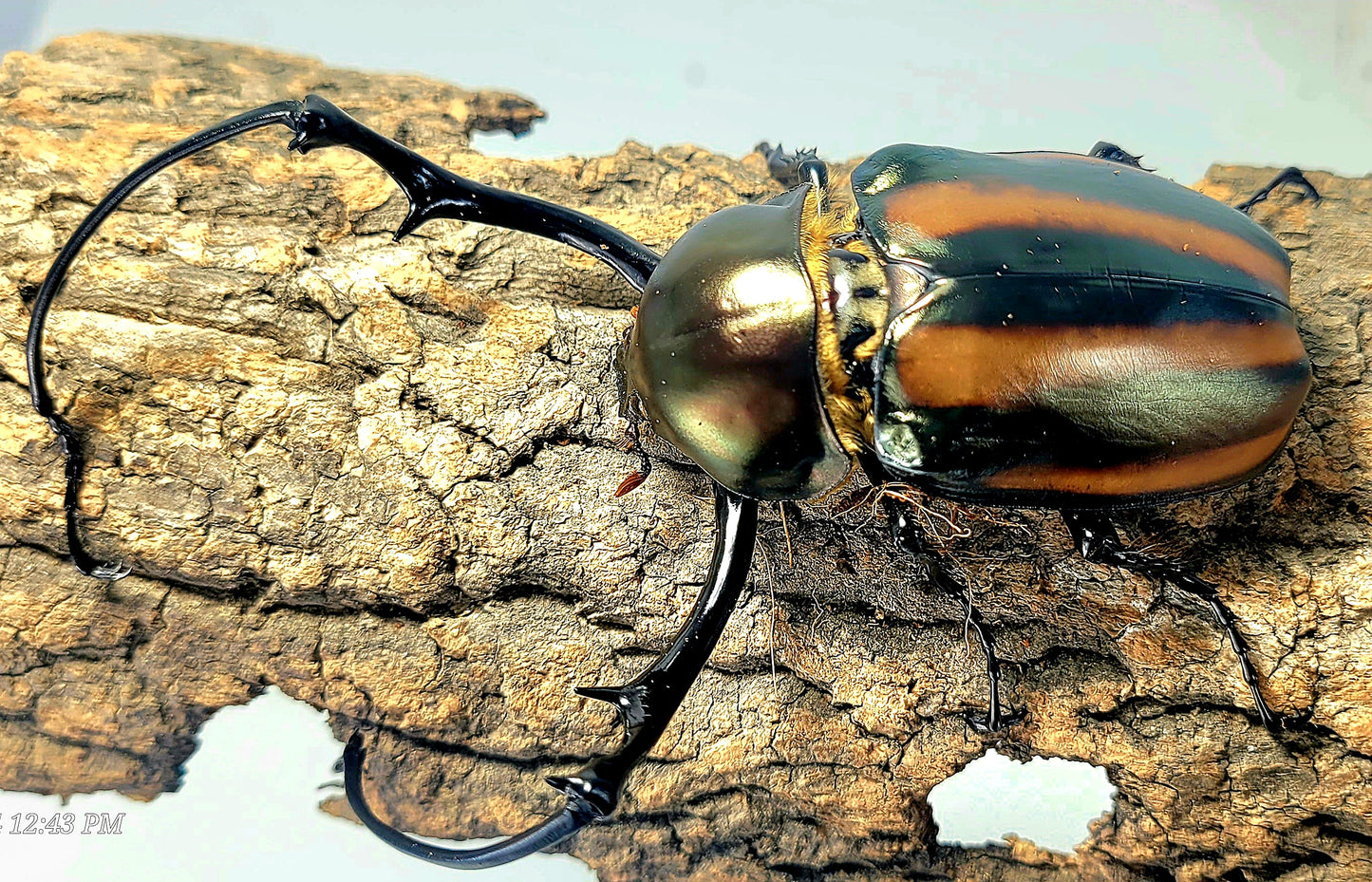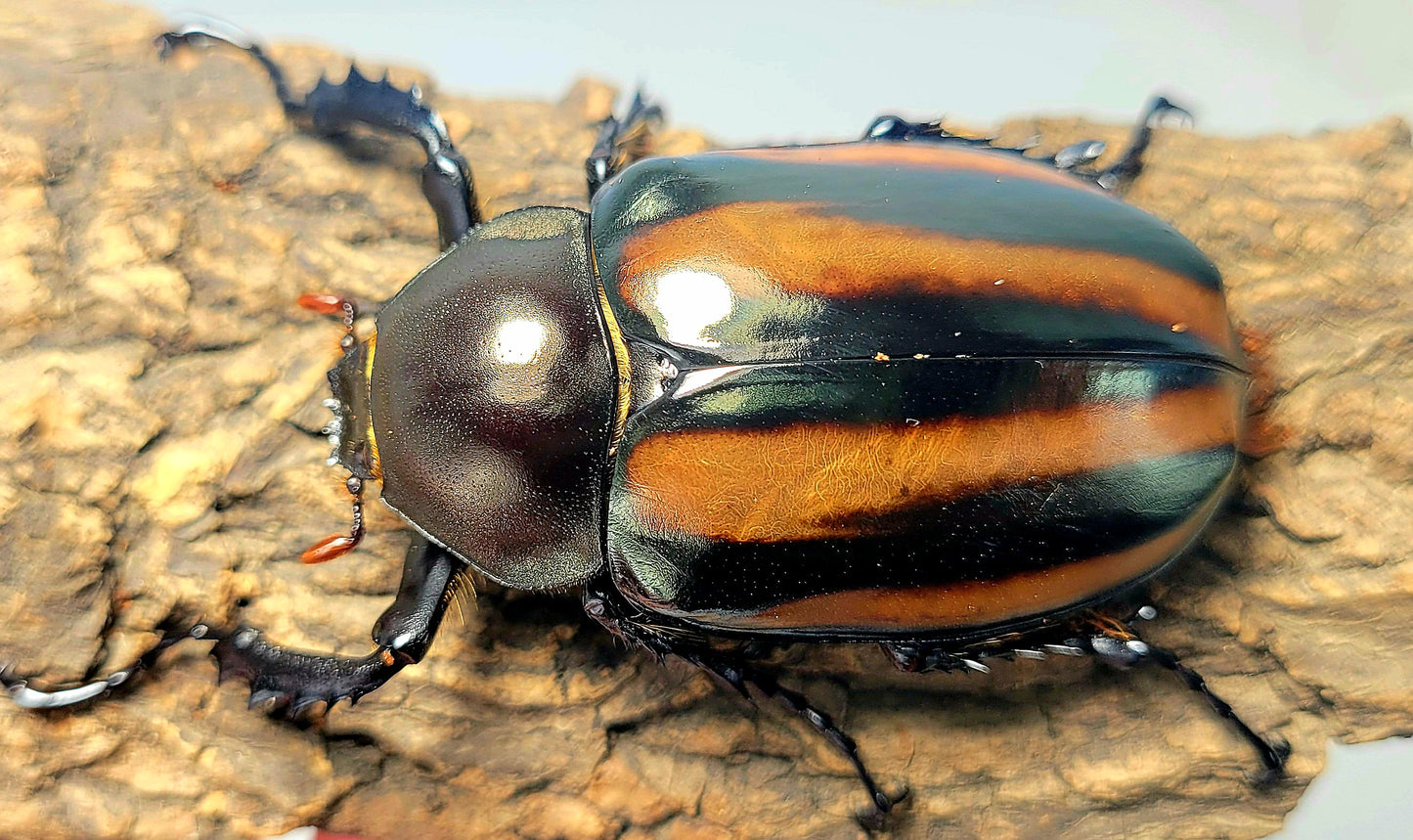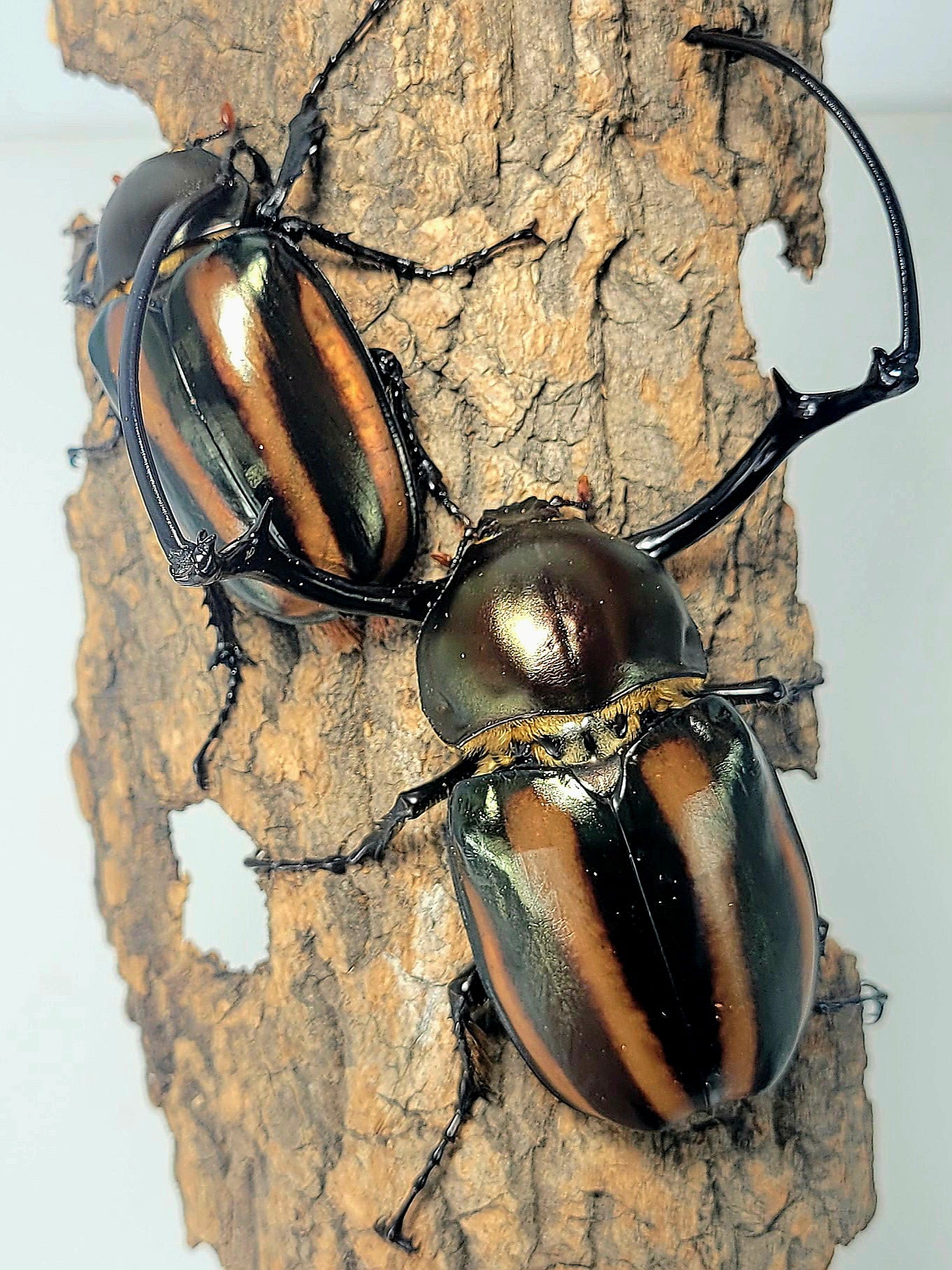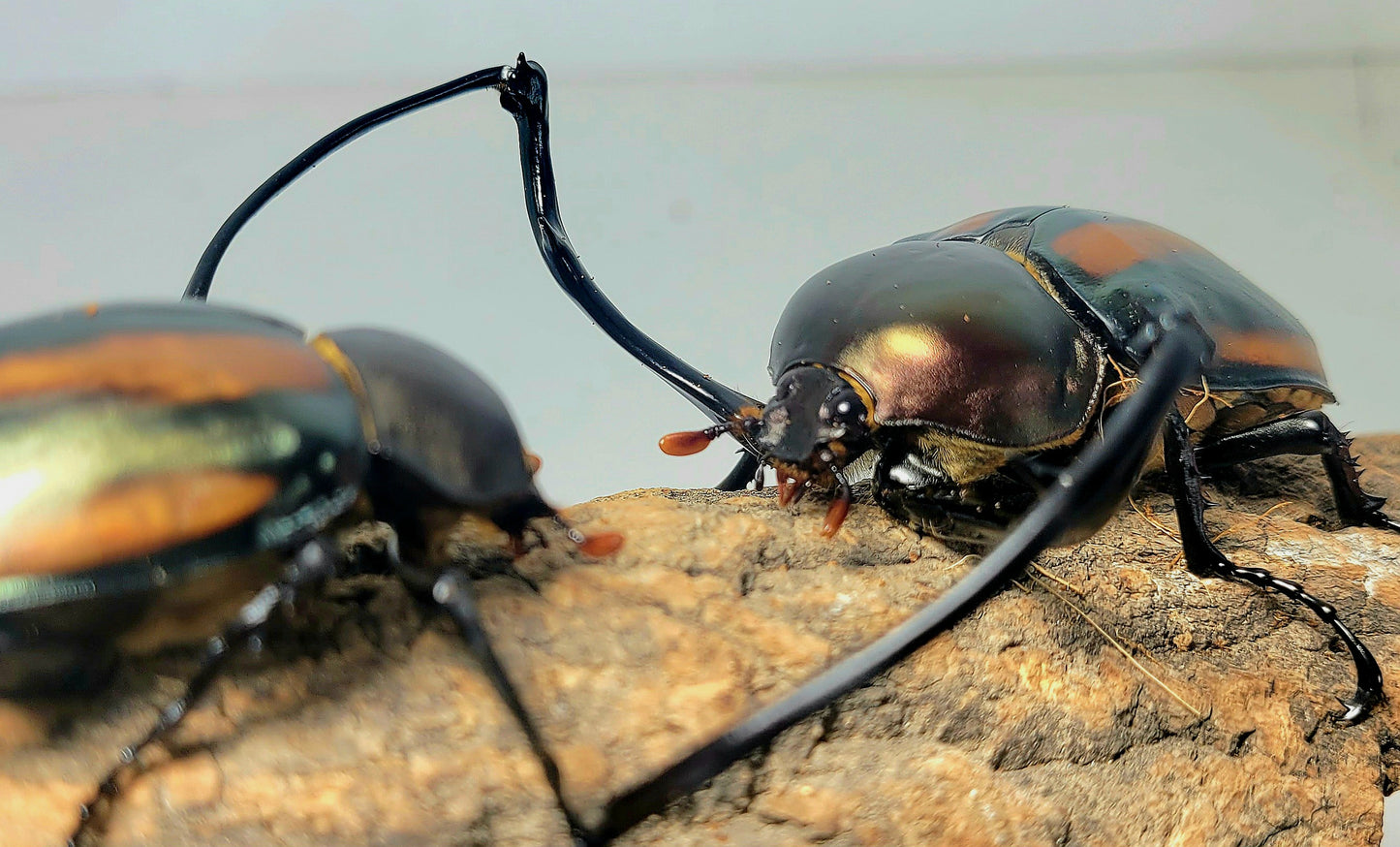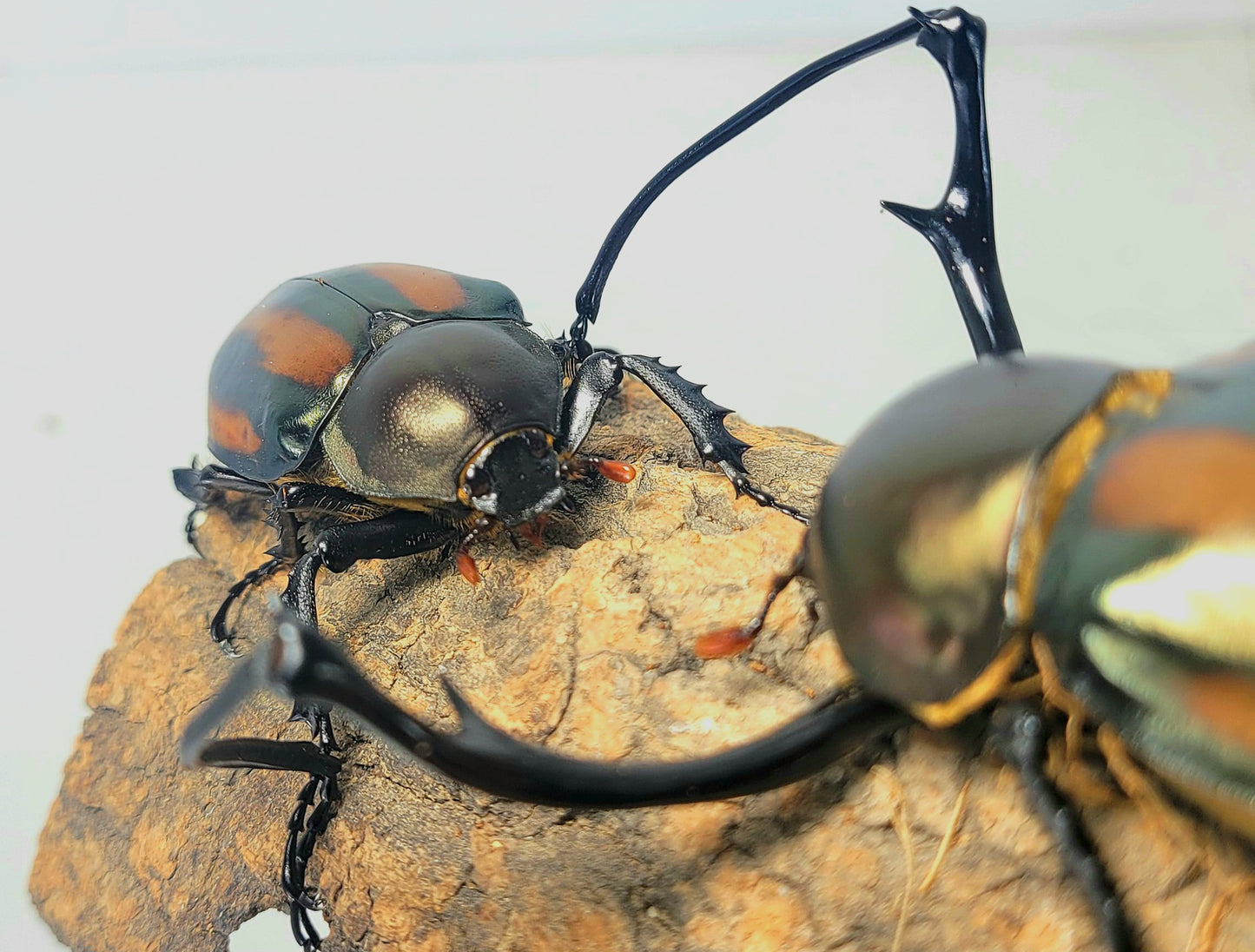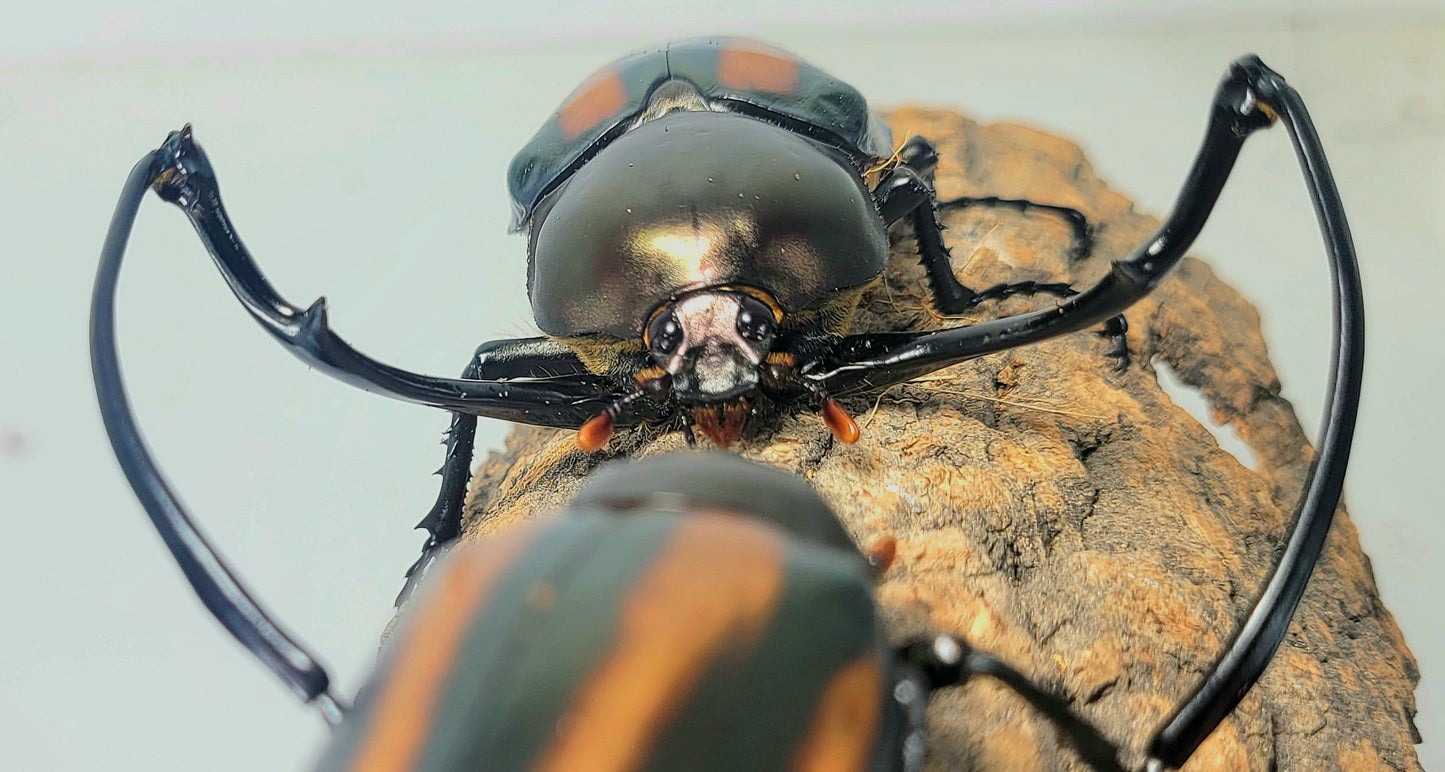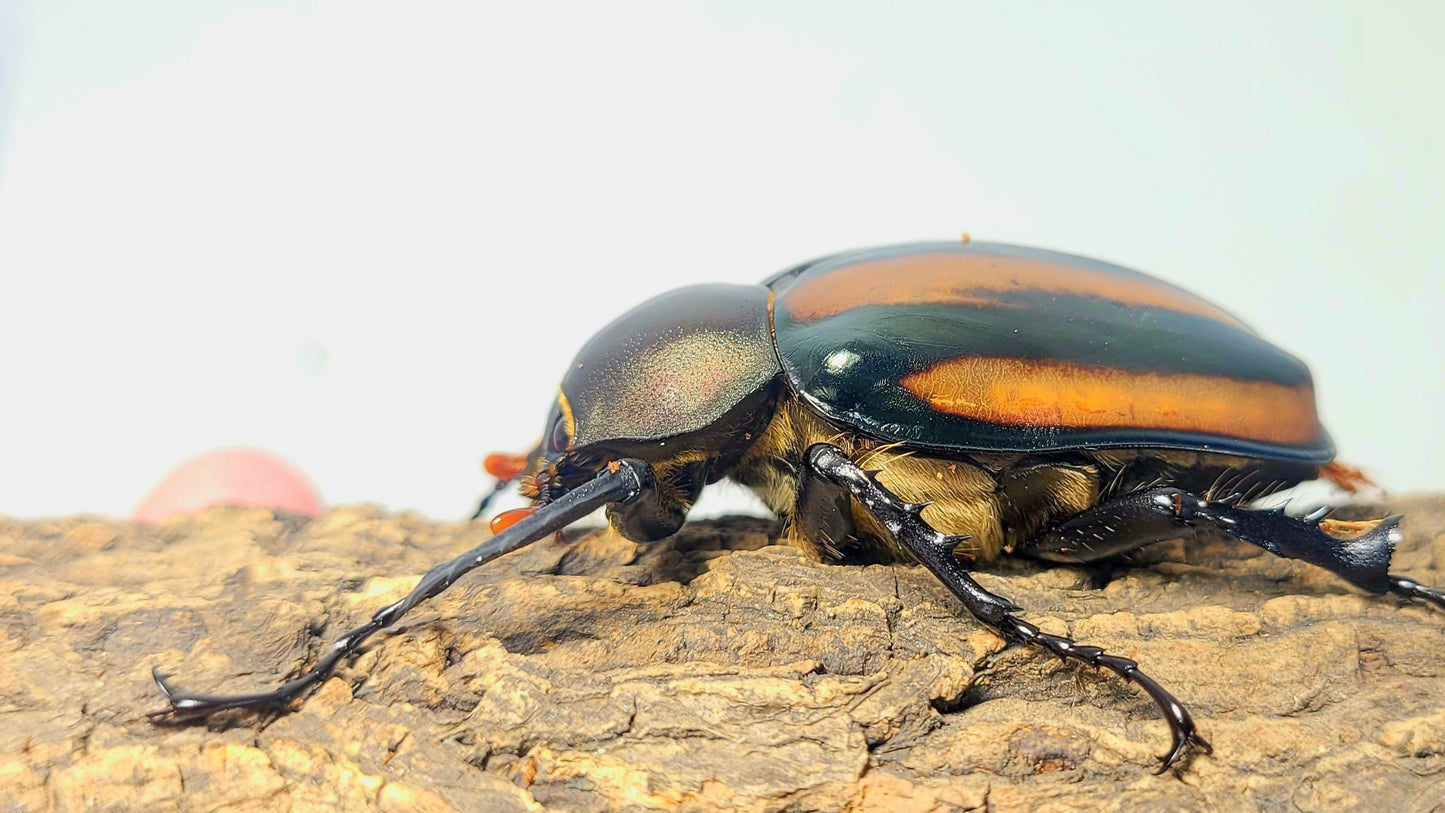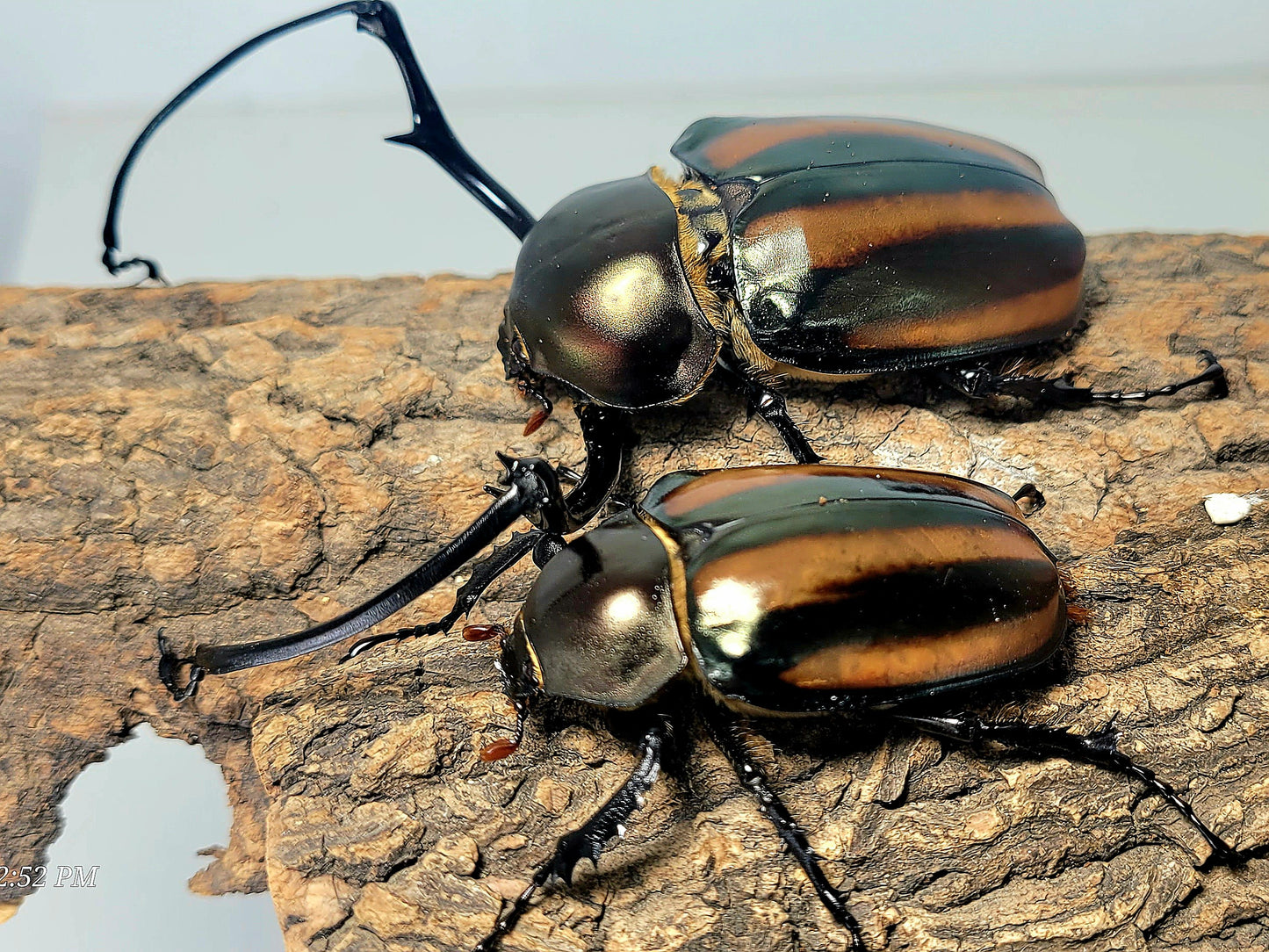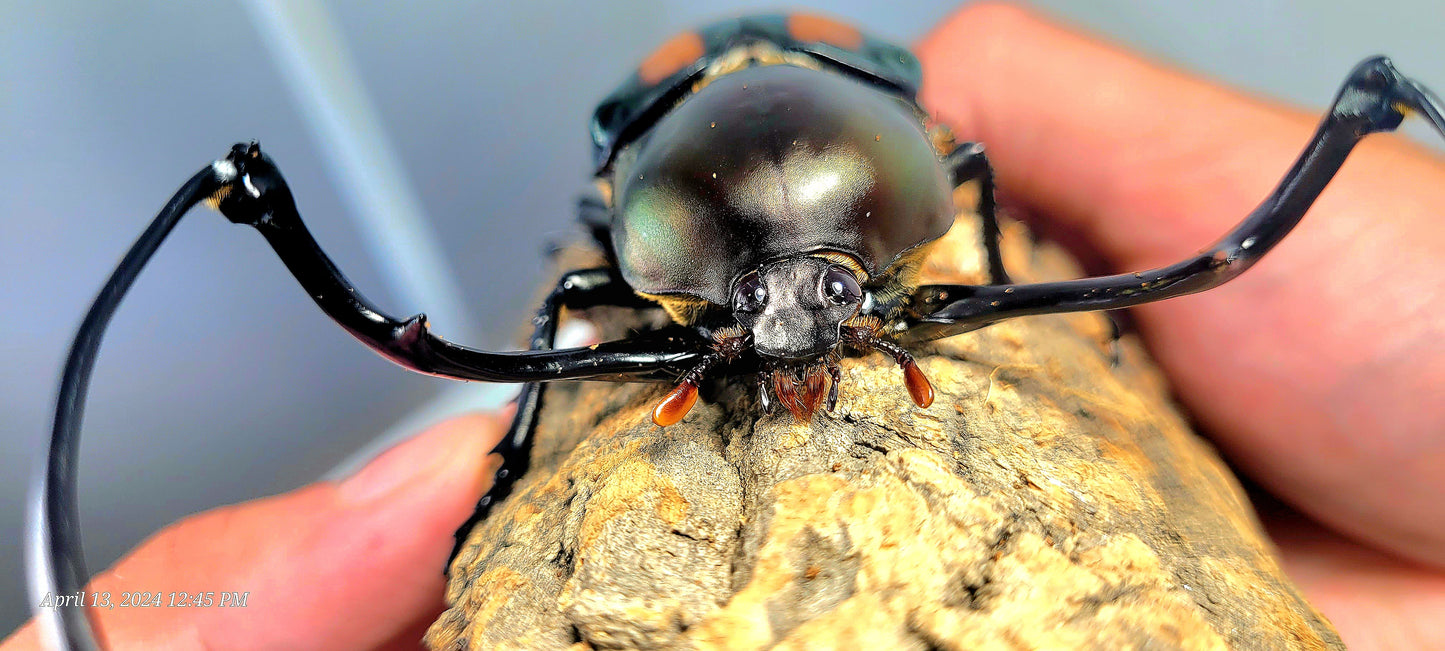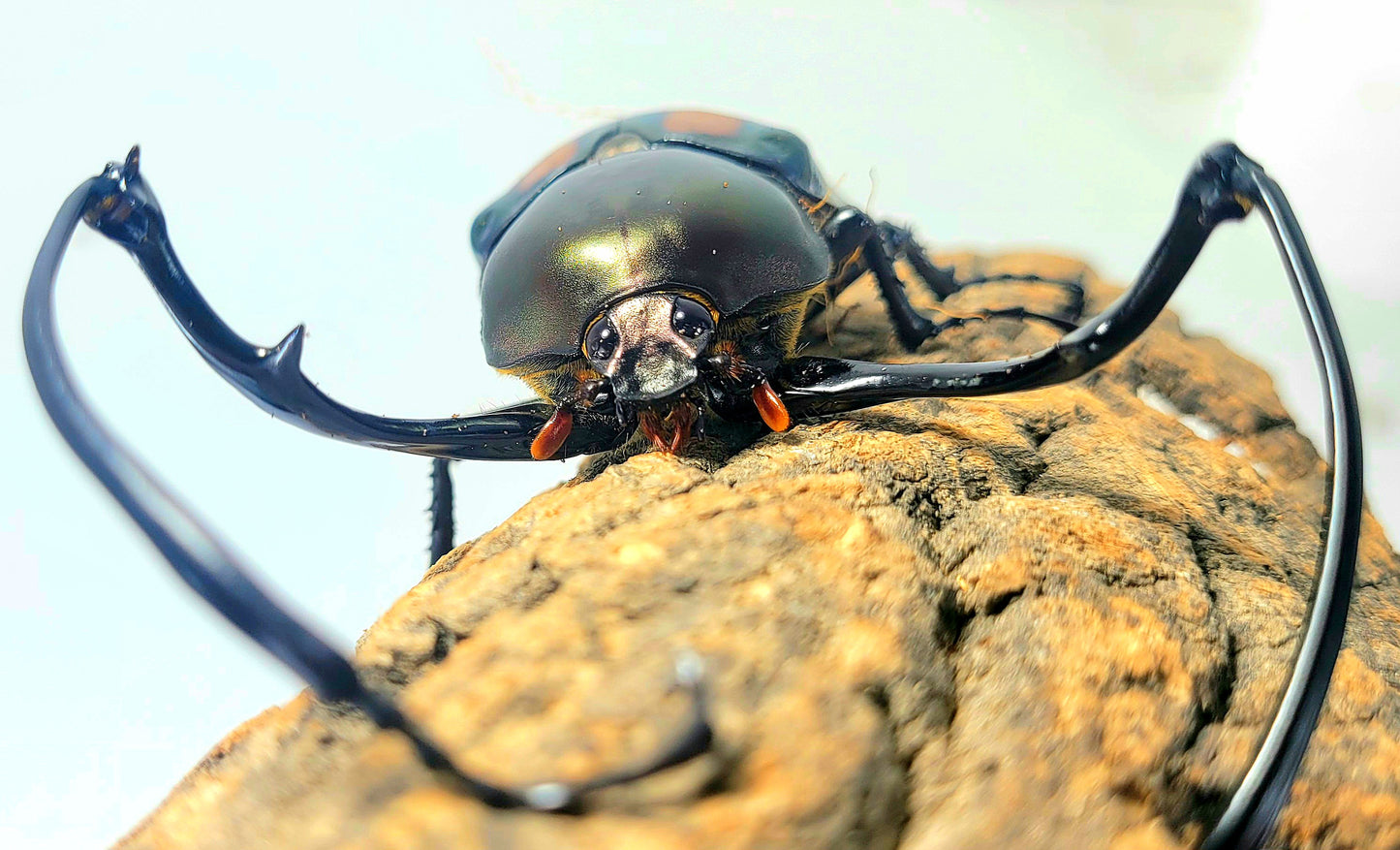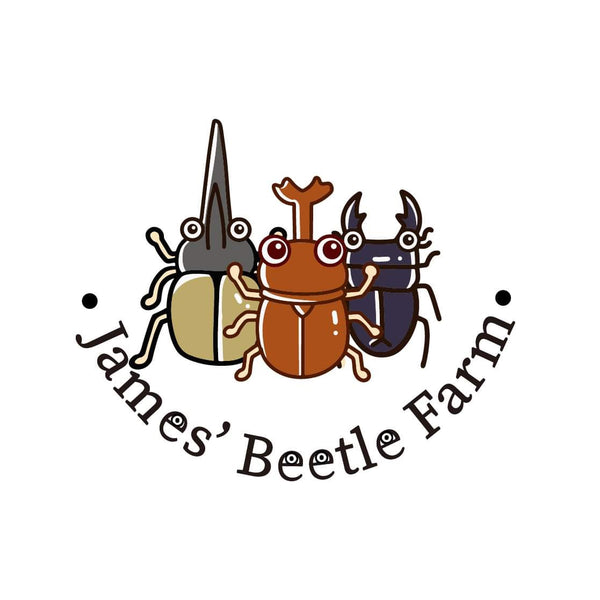1
/
of
13
James' Beetle Farm
Watermelon Longarm Scarab (Euchirus dupontianus)
Watermelon Longarm Scarab (Euchirus dupontianus)
Regular price
$49.99 USD
Regular price
Sale price
$49.99 USD
Unit price
/
per
Shipping calculated at checkout.
Couldn't load pickup availability
Species Summary:
Adult lifespan: 3-5 months
Pupa period: 1 month.
Larva period: 2 years.
Breeding difficulty: 5/10
Species Info:
Measuring between 60 to 80 millimeters in length, the Watermelon Longarm Scarab commands attention with its substantial size among its beetle counterparts. However, it is not just its size that captivates observers; it is the remarkable long forearms adorned with spikes that truly distinguish this species.
The long forearms of the Watermelon Longarm Scarab are a marvel of sexual selection. These elongated appendages, equipped with spikes, are not merely for display; they are wielded as formidable weapons in battles for mating rights. During mating season, males engage in fierce combat, using their long forearms to joust and wrestle for dominance and the opportunity to mate.
Found in diverse habitats across the Philippines, including forests and agricultural areas, the Watermelon Longarm Scarab plays a crucial role in the ecosystem. As with many scarab beetles, it contributes to nutrient recycling processes by feeding on decaying organic matter and aiding in the decomposition of organic materials.
The coloration of the Watermelon Longarm Scarab is often characterized by hues of green and brown, resembling the colors of a watermelon's rind, hence its common name. This distinct color pattern, combined with its formidable long forearms, makes it a visually striking and memorable insect species.
In captivity, providing a suitable habitat for the Watermelon Longarm Scarab is essential for its well-being. This includes ample space for movement, appropriate substrate for burrowing and egg-laying, and a varied diet to meet its nutritional needs.
Observing and caring for Watermelon Longarm Scarabs can be a rewarding experience, offering enthusiasts a glimpse into the fascinating world of insect behavior and adaptation. With its impressive size, distinctive features, and remarkable behavior driven by sexual selection, this beetle species continues to intrigue and captivate the imagination of insect enthusiasts worldwide.
Share


